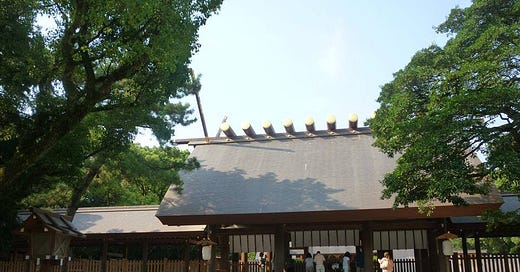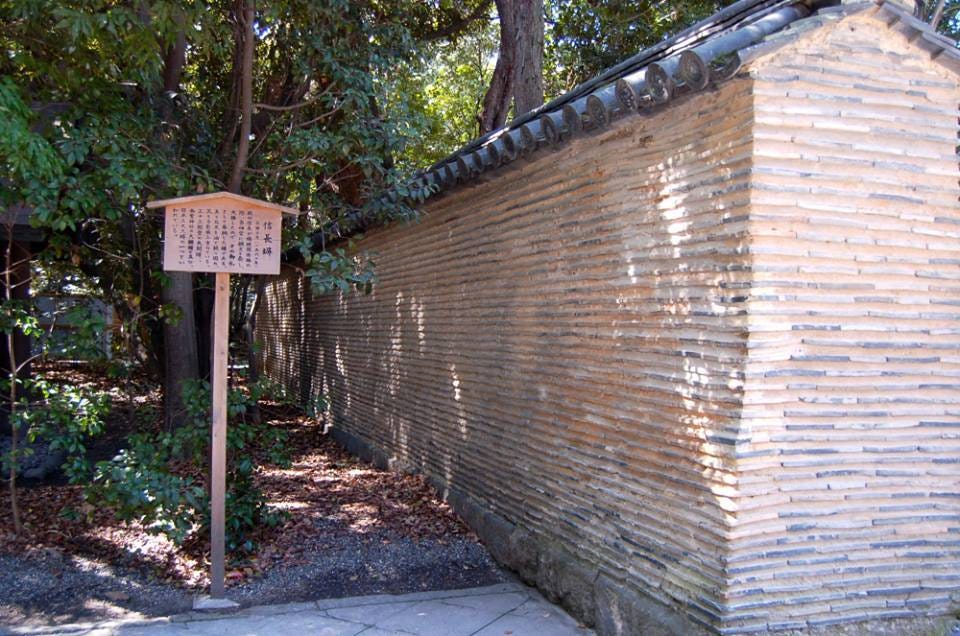Atsuta Jingu is Japan's most important Shinto shrine, second only to the Grand Ise Jingu Shrine complex in Mie Prefecture. Located in the southern suburbs of Nagoya City, Atsuta has long been worshipped by the samurai caste, particularly as it is home to the Kusunagi Sword, one of the Three Imperial Regalia and symbols of the Emperor’s authority. During the Sengoku, Warring States period, many warriors, particularly those of the local Owari region, (modern-day Aichi Prefecture) would visit Atsuta regularly, seeking success on the field. The first of the Kamakura Shogun, Minamoto no Yoritomo (May 9, 1147 – February 9, 1199) was actually born within the grounds of the shrine. His maternal grandfather was the Chief Priest of Atsuta, and his mother had returned home to give birth to her first child there.
The warlord Oda Nobunaga is known to have stopped here in 1560 to pray for victory en route to the Battle of Okehazama against an invading force of overwhelming numbers. The results were history changing!
Located among the ancient trees and shrines of the 1,900-year-old sacred Atsuta Jingu Shinto Shrine in the southern suburbs of Nagoya City is rare example of a traditional Otsuchi styled wall, a tile-topped wall made from traditional Japanese kawara roof tiles sandwiched between a sandy-clay cement. Mostly unknown and hence ignored by the estimated nine million annual visitors to the shrine, the Nobunaga Bei, is a two meter high, 400 meter-long protective wall built around Atsuta Shrine by the warlord of Owari, (Western Aichi Prefecture) Oda Nobunaga following his victory in the Battle of Okehazama in 1560 against the invading forces of the Imagawa clan.
Okehazama
By June of 1600, one of the most powerful warlords of the time, Imagawa Yoshimoto, had formed a three-way alliance with the equally powerful Takeda and Hojo clans, and set out for the capital, Kyoto, in an effort to become shogun. To reach Kyoto, he had to pass through Mikawa, and then Owari Provinces.
Claiming support of 40,000 troops — a figure supposed to put any opposition to fear, and while supported by some historical sources, it is thought the Imagawa troops numbered around 25,000 in reality — Imagawa Yoshimoto began steamrolling his way across Mikawa and Owari Provinces. Mikawa was mostly under his control already, as Matsudaira Motoyasu, the future Tokugawa Ieyasu had been his hostage for the last ten years or so.

The Imagawa had advanced as far as modern-day south-eastern Nagoya City. Imagawa Yoshimoto is believed to have spent the night at Kutsukake Castle, and the next day advanced to an area known as Dengakuhazama, but better remembered as Okehazama. Oda Nobunaga had departed from Kiyosu Castle in the early morning of June 12, and over a four hour period made his way towards the battlefield via the ancient Atsuta Shrine. The distance from Nobunaga’s Kiyosu Castle to Atsuta is around 12.5 kilometers by foot, a less than two and a half hours’ walk, yet the mounted Nobunaga took four hours to get from Kiyosu to Atsuta.
It is speculated that he may have first gone to various local castles seeking supporters for his campaign. Oda Nobunaga could only raise an estimated 2,500 men, a tenth of the Imagawa forces. Still, he advanced.
The story goes that Nobunaga prayed to the gods of Atsuta for victory, and threw down five copper coins as an offering. Each of the coins landed face up! To the surprised Nobunaga and his men, this was auspicious indeed!
Nobunaga then took the Tokaido highway route to an area near where the Imagawa army was camped, and waited.
Imagawa Yoshimoto had sent Tokugawa Ieyasu and a small force ahead to replenish supplies and help secure the Imagawa held Odaka Castle. While Ieyasu and his men were at Odaka Castle, Nobunaga and his troops attacked the Imagawa. Having gone around the bulk of the Imagawa forces camped in the various valleys of the hilly Okahazama area, and supposedly undercover of a thunderstorm, they launched an assault on the heart of the invaders main camp. The Imagawa leader, Imagawa Yoshimoto, and most of the Imagawa generals were quickly dispatched, and their heads taken. Despite the ratio of around ten to one, Nobunaga had defeated the numerically superior enemy. The Imagawa were destroyed, Owari was saved, and Nobunaga’s reputation was greatly enhanced.
Once victorious, in gratitude, the warlord later returned to the great Atsuta Shrine, and built a large, sturdy 400-meter-long protective wall around the shrine’s inner precincts. Parts of that Nobunaga-Bei, the Nobunaga Wall still stand to this day.
Much of the impressive wall and many of the structures around the shrine were destroyed during the air raids of World War Two, and only around 120 meters of the once 400 meter plus wall remains. This wall is now recognized by researchers as one of Japan’s three most important Otsuchi styled walls, along with those of the Sanjusangendo of Kyoto and those of the Hyogo Nishinomiya Shrine.
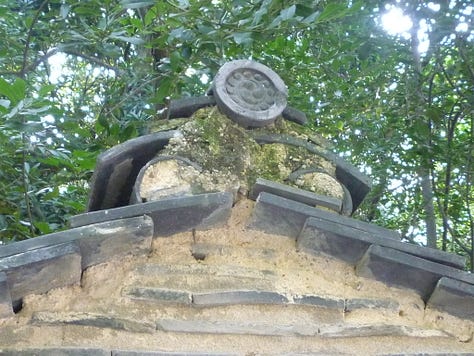
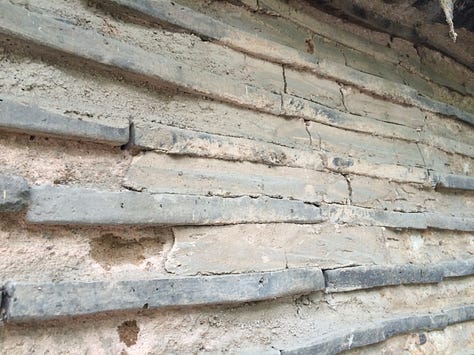
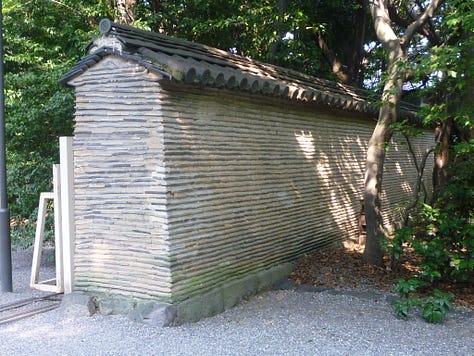
The gods of Atsuta Jingu Shrine smiled on Nobunaga, and protected him and his samurai, and in return, Nobunaga protected the shrine with a grand wall. Tokugawa Ieyasu, who finally gained his freedom and was able to return to his ancestral lands in Okazaki following the death of Imagawa Yoshimoto at Okehazama, is also known to have prayed for victory at Atsuta Shrine while en route to the Battle of Sekigahara in 1600.

